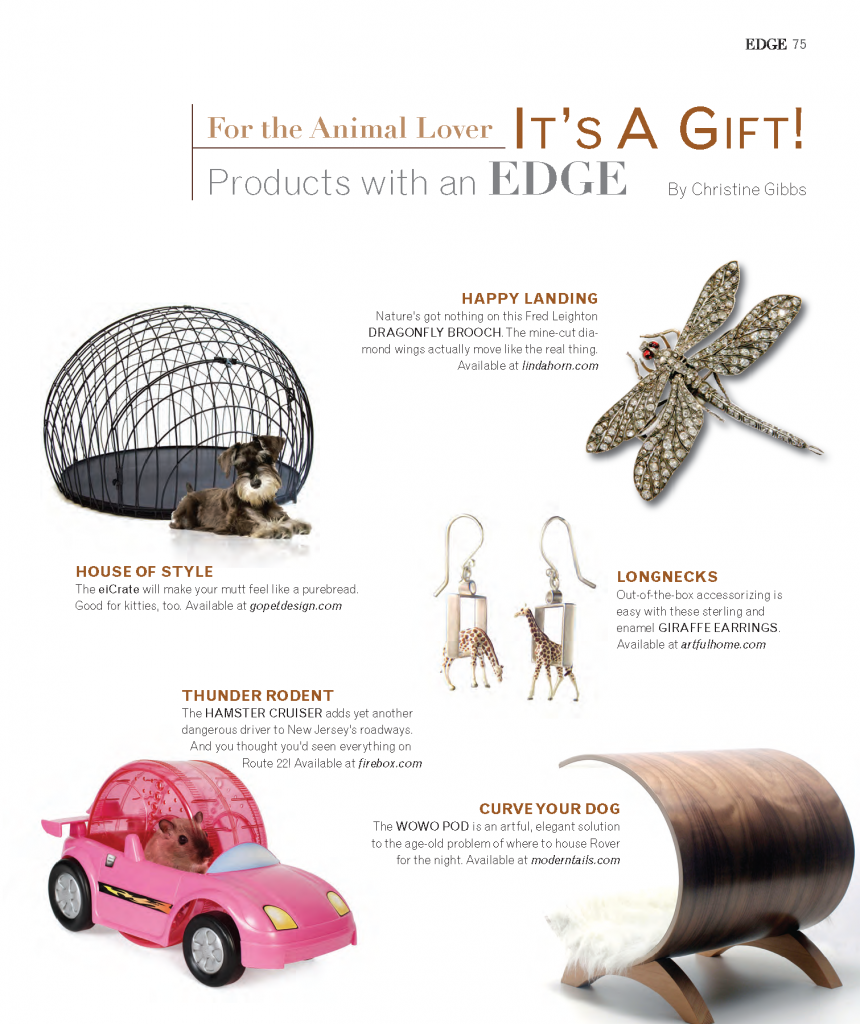My 30-day affair with Twitter
I am a cyber shut-in. I’m all about stamps and dial tones. I am an analog anomaly, the subject of eye rolls and exasperated sighs from techie teens, two of whom live under my roof. I am part of the generation whose fingers did the walking across yellow pages decades before they touched a keypad. To me, Twitter “tweets” seemed like 21st century postcards—an old idea shrouded in new technology. Go to any antique store (or to eBay if it’s easier) and read the flipsides of those ancient souvenirs. Same number of characters, same depth of thought and feeling. Am I the  only one who sees this?
only one who sees this?
Apparently I am. Nevertheless, one day my inner narrator whispered, “Look how much fun everyone is having as they fast-track through the ether world. Don’t you want to have fun, too?” So with deep skepticism and almost no eknow-how, I decided that I was going to give myself one month to figure out what Twitter was all about. My first hurdle was setting up my Twitter account. I felt an overwhelming surge of prickly heat before I even found the Twitter home page. Forget it. Too complicated. I listen to my body and it was telling me in every way that this was a stupid idea. Three days later I was enjoying a meal at the home of a friend who spends a good portion of his day inside the virtual world.
Normally I don’t have much to contribute when dinner conversation requires a degree in cyber-speak. Which is why everyone was surprised when I turned the topic to my brief and unsuccessful dalliance with Twitter. A Twitter account? Really? My host chuckled and said it takes about two minutes to set up. He’d do it after dinner. And that is how I had the Senior Chairman of the Visual Effects Society, the founder of the Visual Effects Awards— the special effects supervisor of countless big-budget movies—usher me into the world of Twitter. He even wrote my first tweet: Hi – I’m here. Sadly, it was probably my best.
My next step, I was told, was choosing people to follow. By the time we said our goodbyes, I had my own account, six people to follow, one tweet (or is it Tweet, upper case?) and had already absorbed a quirky story about New Jersey’s own Danny DeVito. If you didn’t know, Danny likes to tweet. Whenever he goes someplace new, he likes to take a picture of his bare foot and post it on Twitter. When asked why he does this, Mr. DeVito replied with a shrug, “People seem to like my feet.” I verified this story (with a couple of phone calls) and it’s true; Twitter @DannyDeVito and you can see photos of his foot. With a bounce in my step and a song in my heart, I announced to my teenage sons that I had a Twitter account. Silence.
Then, in concert, “No one will follow you, Mom. You don’t have any friends.” Yes, I do. “Are they on Twitter?” No, I don’t think so. “So, who’s going to follow you?” I slumped away. Before turning in for the night, I returned to the Twitter web site and discovered the How To Promote Your Profile option. I clicked on it, started reading, and promptly fell asleep. This is not how I learn. I needed to dive right in and get my hands dirty. I posted my first solo tweet: Writing this article for Edge magazine. How to tweet? The next day I had two followers. I felt great. I was liked! So, I tried another tweet to get more people: What happened with Katy Perry and Russell Brand? Is anyone surprised? I now hang my head in shame. What an awful tweet. Asking questions? Really? I later learned this was an efaux pas. Or a faux epas.
Apparently, another breach of etiquette is tweeting a response to a dinner invitation. You text that. Texting is conversational and more intimate; tweets are statements. I learned this from watching The Real Housewives of Beverly Hills, my guilty pleasure. Still, I had two followers, which is two more than I’d had 24 hours earlier. They looked young in their pictures, and sounded young in their tweets. I decided I should try to pull in more young adults, because they seemed to really like me. Then it hit me. Is Twitter a popularity contest? This was just the kind of garbage that went on in high school, and I was right back in it.
The only difference was that the entire world could witness my fumbling, not just a contained environment like a school. Whatever unfiltered idiocy that spilled out of my brain and onto a page would not only be broadcast for the entire world to see, but stored for eternity in some cyber-warehouse. I know that people find this kind of “immortality” appealing. I don’t. What did I have to say that was worth saying at all, much less saying in 140 characters? The question is almost metaphysical, isn’t it? So naturally I turned to my older son, age 17, for sage advice. “Write what you’re feeling, or doing,” he said. “Write something people would appreciate.” Then he turned his back on me and resumed doing his homework. The meeting was over, but I wouldn’t leave. He mumbled something about status update. “What’s that?” I asked. Now, he spun back around and glared at me. “Why are you even on Twitter?” “Because I have to,” I answered. “I’m writing a story. Can I follow you?” “No!” Other people tweet with confidence. I’m not talking about the Oprahs and Kelly Ripas of the world, celebrities who use Twitter as a tool to promote their talk shows. Or Conan O’Brian, who broadcasts mildly amusing quips. Or George Clooney’s tweet about going to a baseball game and then  saying goodbye because he has to change his user name. (By the way, did you know that Lady Gaga has more Twitter followers than the Pope, the President, and Katy Perry—combined?)
saying goodbye because he has to change his user name. (By the way, did you know that Lady Gaga has more Twitter followers than the Pope, the President, and Katy Perry—combined?)
No, I’m talking about average folks, like my very first follower, who sometimes tweeted three or four times a day! She followed me because she wanted me to follow her, and I did; sometimes in horror, other times in awe. My follower “friend” tweeted that her mother called her an ugly weed so that she was never aware of anything until she was older. I wasn’t t sure exactly what she meant, but it sounded so sad. My very next tweet was from Barack Obama. It said In America we don’t give up, we get up. Yes, I thought, even ugly weeds can become flowers with a “can-do” attitude. Then the President tweeted that he was going to sign the payroll tax cut extension into law. My follower tweeted I’ve been out of work so long that I’ve forgotten how to hate people. Funny, but weird! The pressure to write something great was compounding by the hour.
I was riddled with performance anxiety. I would never have the guts to say something like “Color is an intense experience on its own,” and send it off into the universe unprotected. As a rule, if I am going to say something moronic, I want to be able to see how it lands on my listener’s face (because that’s half the fun in uttering banalities) or, at the very least, be able to defend myself. Tweeting, I was coming to understand, is like the speed-dating version of a blind cocktail party. Everyone is trying to impress everyone else, with nothing to back it up. However, it wasn’t until my younger son, age 13, began looking closely at my coterie of Twitter pals that total disillusionment set in. The young and attractive blonde woman who tweeted about all the racy things she wanted to do to other people, to herself, to me was not the flirtatious scamp I imagined her to be. Nor was my other follower all she seemed to be. I had wondered why she was always telling me about all the cool free stuff she was scoring—Playstation 3, Guess jeans, gift cards from Ikea and Best Buy, and CA$H—just by clicking onto a particular website or email. “Stop!” my son bellowed. “Mom, stop!” He demanded to see my Twitter account. I handed him my phone and after a few seconds he informed me that my friends were fake. “Definitely the blonde one is fake because all she talks about is sex and it’s an advertisement.” It is? He raised his eyebrows and nodded his head. “It’s hacked,” he said. “If you see a person post a link asking you to visit it, don’t do it!”
He repeated this warning to reinforce its seriousness. He refused to tell me what would happen if I did click onto these other links. Instead, he looked me in the eye, shook his head and murmured, “It’s bad, very bad. Don’t go there.” “Okay,” I said obediently, “I won’t.” But was he absolutely sure my friends are fake? Yes. Even the first one? The nice chatty one? Noting the disappointment  in my voice, he tried to soften the blow. “Well, I’m not 100 percent sure about her.” But I knew he was right. She was a fake, too. Then, to add insult to injury, follower number one dropped me while my son was holding the phone. “Snap, crackle, pop,” he smiled, “you’ve been dropped!” Of course I was dropped.
in my voice, he tried to soften the blow. “Well, I’m not 100 percent sure about her.” But I knew he was right. She was a fake, too. Then, to add insult to injury, follower number one dropped me while my son was holding the phone. “Snap, crackle, pop,” he smiled, “you’ve been dropped!” Of course I was dropped.
If you have nothing to bring to the table, who is going to invite you to dinner? Alas, in my month on Twitter, the most followers I had at one time was three. And near as I could tell, only one was real: ABC News. I am still waiting for the dinner invite to ABC’s house, and will text my RSVP. The fact that I even cared about the number of followers I had ticked me off. It really did stir up all those 10th grade emotions and insecurities. Three decades after completing my secondary education, I not only had slipped back into the worst part of high school, but had discovered the worst part of Twitter.
I actually felt lonelier when I was on Twitter than I did when I was off-line. As my month on Twitter drew to a close, I decided the two things I liked most about it were the news feeds and traffic updates. But, what’s the catch phrase? Oh yeah, there are Apps for that. So is there a need for Twitter? Socially, there is a place for it, but a need? I don’t think so. As a promotional tool for celebrities and event planners? Maybe. My read is that this is a moment that is happening, and people are lapping it up. It’s an easy way to be heard even if you have nothing important to say. It is freedom of speech if you can crush your thoughts into 140 characters. Perhaps, deep down, what appeals to people most about Twitter is that it is evidence that you exist.
Hi – I’m here. See, proof that I’ve lived. I tweeted a total of six times. Technically, I suppose the number was four. I did not write the first tweet, nor did I author the last one. My oldest son wrote my final tweet, and although it is something I would never say, I posted it because he finally came around and tried to help me explore this cyber world that seemed so vast and so alien to me. With that in mind I give you my final tweet exactly how my son wrote it: – omg i think i might be obsessed with this new thing called #internet shopping. “There’s a pound sign in front of internet,” I pointed out, ever the editor. “Mom, that’s a hashtag.” “What’s a hashtag?”
Editor’s Note: J.M. Stewart lives and works in Southern California. She interviewed Joe and Gia Mantegna for the Hot Stuff issue of EDGE and is working on an EQ vs. IQ feature for the upcoming Gray Matter issue.
All Photos credit: iStockphoto/Thinkstock





















 What should I order for dinner? David Burke: Always ask to hear about the specials. Are they seasonal? Do the match the weather? Are they really special? I was at an Italian place one night and they had 15 specials. To me that’s not special. There are certain things I find irresistible. Peking Duck. When I see that on a menu I automatically order it, even if I’m not in a Chinese restaurant. Stone crab with mustard sauce. Paella, but only at a really good place. I love Florentine ravioli with the spinach and the poached egg. In terms of seasonal items, you can’t go wrong with Copper River salmon or shad roe in the spring, and pheasant and venison around the holidays. And truffles when they first hit the season. If you are less adventurous and looking for reliable, a good restaurant should always do the simple things well—Caesar salad, roasted chicken, crab cakes, omelets, bread. Chef David Burke knows his way around a menu. He owns Fromagerie in Rumson, Primehouse in Chicago, Prime in Connecticut, and Fishtail, David Burke Townhouse and David Burke Kitchen at the James Hotel in Manhattan.
What should I order for dinner? David Burke: Always ask to hear about the specials. Are they seasonal? Do the match the weather? Are they really special? I was at an Italian place one night and they had 15 specials. To me that’s not special. There are certain things I find irresistible. Peking Duck. When I see that on a menu I automatically order it, even if I’m not in a Chinese restaurant. Stone crab with mustard sauce. Paella, but only at a really good place. I love Florentine ravioli with the spinach and the poached egg. In terms of seasonal items, you can’t go wrong with Copper River salmon or shad roe in the spring, and pheasant and venison around the holidays. And truffles when they first hit the season. If you are less adventurous and looking for reliable, a good restaurant should always do the simple things well—Caesar salad, roasted chicken, crab cakes, omelets, bread. Chef David Burke knows his way around a menu. He owns Fromagerie in Rumson, Primehouse in Chicago, Prime in Connecticut, and Fishtail, David Burke Townhouse and David Burke Kitchen at the James Hotel in Manhattan.  know which architect was great. Samuel Friedmann is President of Gevril Group. The Gevril name has been associated with museum-quality timepieces dating back to the 16th century.
know which architect was great. Samuel Friedmann is President of Gevril Group. The Gevril name has been associated with museum-quality timepieces dating back to the 16th century. Why am I not making my own pasta? Teresa Giudice: Given that gourmet pasta can run $7 a pound and more—and that it’s so simple to do— I don’t know why. There’s something magical about making it yourself. It does take a little more time and effort, but the reward is so, so worth it. When it comes to making pasta from scratch, you need to buy a decent machine (there are good ones for $30 and great ones for under $100) and use the same basic recipe with only two ingredients: flour and eggs. What determines the final product is how you cut it. For most pasta shapes, the dough should be as thick as a nickel. For ravioli, which overlaps at the edges, the pasta should be as thick as a dime. Two things to remember after you’re done: add salt to the water after it boils but before the pasta goes in…and make sure your sauce is done by the time the water comes to a boil. Fresh pasta cooks quickly! Teresa Giudice became a reality TV icon on Real Housewives of New Jersey…and is now an accomplished author. Her second cookbook—Fabulicious!—made the New York Times Best-Seller List.
Why am I not making my own pasta? Teresa Giudice: Given that gourmet pasta can run $7 a pound and more—and that it’s so simple to do— I don’t know why. There’s something magical about making it yourself. It does take a little more time and effort, but the reward is so, so worth it. When it comes to making pasta from scratch, you need to buy a decent machine (there are good ones for $30 and great ones for under $100) and use the same basic recipe with only two ingredients: flour and eggs. What determines the final product is how you cut it. For most pasta shapes, the dough should be as thick as a nickel. For ravioli, which overlaps at the edges, the pasta should be as thick as a dime. Two things to remember after you’re done: add salt to the water after it boils but before the pasta goes in…and make sure your sauce is done by the time the water comes to a boil. Fresh pasta cooks quickly! Teresa Giudice became a reality TV icon on Real Housewives of New Jersey…and is now an accomplished author. Her second cookbook—Fabulicious!—made the New York Times Best-Seller List.  I’m 44. I’m single. What now? Norah Marler: Get comfortable with yourself; it’s okay to be single and at this time of your life it’s okay to be a little selfish. Enjoy some “me time” by doing all the things you haven’t been able to get to because you’ve been too busy giving your time to others. Perhaps you’ve been longing to go back to school or take dancing lessons, learn to ski or become a world traveler. Whatever your desires are, now is the time start living them. Then commit to the best interests of the person you love: You. Analyze your past, present and hoped-for future and develop a program for achieving that future. Make a list of what you want and what you need. Create a life plan that will fulfill your needs. It’s your life—create it as you wish, but you must follow a Think-It…Plan-It…Built-It blueprint. Norah Marler is 44 and has been single for many years. She is a passionate advocate for women’s health, safety and wellness, the author of No More Dating Pigs and the mind behind the nomoredatingpigs.com web site.
I’m 44. I’m single. What now? Norah Marler: Get comfortable with yourself; it’s okay to be single and at this time of your life it’s okay to be a little selfish. Enjoy some “me time” by doing all the things you haven’t been able to get to because you’ve been too busy giving your time to others. Perhaps you’ve been longing to go back to school or take dancing lessons, learn to ski or become a world traveler. Whatever your desires are, now is the time start living them. Then commit to the best interests of the person you love: You. Analyze your past, present and hoped-for future and develop a program for achieving that future. Make a list of what you want and what you need. Create a life plan that will fulfill your needs. It’s your life—create it as you wish, but you must follow a Think-It…Plan-It…Built-It blueprint. Norah Marler is 44 and has been single for many years. She is a passionate advocate for women’s health, safety and wellness, the author of No More Dating Pigs and the mind behind the nomoredatingpigs.com web site. 

 is determined by a combination of the square footage, location and amenities. The more you know about the value of each in the constantly shifting sands of New York City’s co-op, condo and rental market, the more bang you’ll get for your buck. The bells and whistles that drive up the price include having a doorman, a terrace, a non-closetsized kitchen and a good view. But you knew that already. Not everything, however, is intuitive to the out-of-towner. For example, discrepancies in prices between one-bedrooms and studios may not be overwhelming. Neighborhoods that seem on-the-fringe when you’re visiting the city may actually be on the cusp. And that Upper East Side neighborhood that used to be out of reach when you were twentysomething and just out of college? Well, there’s good news on that front, too. Manhattan has changed dramatically (Gothamites like to do everything dramatically) in the last 20 years. Areas like Tribeca, the Flatiron district, the Lower East Side, and the Meatpacking district—where most apartments were once cheap, but often of dubious quality and lacking in amenities—have become the hottest residential neighborhoods in town. Consequently, the Upper East Side, once the magnet for people of means looking for apartments, has become relatively reasonable. It’s one of six neighborhoods in the city that offers good deals, interesting features or a little of both: Wall Street: Numerous palatial old office buildings in the Financial District, abandoned by brokerage firms, have been converted to apartments.
is determined by a combination of the square footage, location and amenities. The more you know about the value of each in the constantly shifting sands of New York City’s co-op, condo and rental market, the more bang you’ll get for your buck. The bells and whistles that drive up the price include having a doorman, a terrace, a non-closetsized kitchen and a good view. But you knew that already. Not everything, however, is intuitive to the out-of-towner. For example, discrepancies in prices between one-bedrooms and studios may not be overwhelming. Neighborhoods that seem on-the-fringe when you’re visiting the city may actually be on the cusp. And that Upper East Side neighborhood that used to be out of reach when you were twentysomething and just out of college? Well, there’s good news on that front, too. Manhattan has changed dramatically (Gothamites like to do everything dramatically) in the last 20 years. Areas like Tribeca, the Flatiron district, the Lower East Side, and the Meatpacking district—where most apartments were once cheap, but often of dubious quality and lacking in amenities—have become the hottest residential neighborhoods in town. Consequently, the Upper East Side, once the magnet for people of means looking for apartments, has become relatively reasonable. It’s one of six neighborhoods in the city that offers good deals, interesting features or a little of both: Wall Street: Numerous palatial old office buildings in the Financial District, abandoned by brokerage firms, have been converted to apartments.

 It’s that time of year again. For Sale signs are popping up everywhere you look. And once again, it’s a buyer’s market this summer. House hunters can afford to be picky, and they should be. Holding out for something extraordinary—price wise, property-wise or both—is half the fun of the hunt! When’s the best time to make your move? When the stars align and you walk into a home with some feature that blows away everything else you’ve seen. A charming front porch. A killer kitchen. The master bath of your dreams. A suburban oasis in the backyard. There are a lot of names for the house that speaks to you in that deep, intimate way. We call it the Home Run.
It’s that time of year again. For Sale signs are popping up everywhere you look. And once again, it’s a buyer’s market this summer. House hunters can afford to be picky, and they should be. Holding out for something extraordinary—price wise, property-wise or both—is half the fun of the hunt! When’s the best time to make your move? When the stars align and you walk into a home with some feature that blows away everything else you’ve seen. A charming front porch. A killer kitchen. The master bath of your dreams. A suburban oasis in the backyard. There are a lot of names for the house that speaks to you in that deep, intimate way. We call it the Home Run.







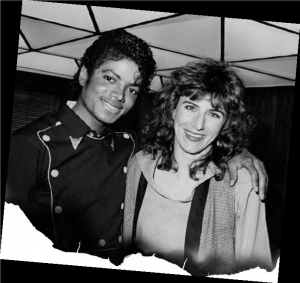






 You may be too old to fire off a letter to Santa, but that’s no reason for the kid in you to let the holidays pass without making a decent wish list. From old games to new electronics, there’s something out there to please even the most discerning inner child. May your season be joy filled…and toy filled!
You may be too old to fire off a letter to Santa, but that’s no reason for the kid in you to let the holidays pass without making a decent wish list. From old games to new electronics, there’s something out there to please even the most discerning inner child. May your season be joy filled…and toy filled!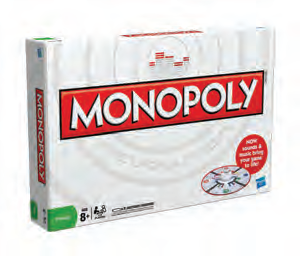 staid old board with sound effects and credit cards instead of cash. Buying houses you can’t afford in real life is fun! History’s happiest accident—the Slinky— has
staid old board with sound effects and credit cards instead of cash. Buying houses you can’t afford in real life is fun! History’s happiest accident—the Slinky— has
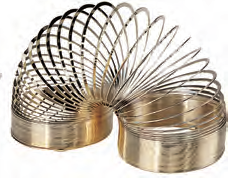 returned to the family staircase in a 14- karat, gold-plated-brass 55th Anniversary Edition ($100 at Buy.com). According to legend, the discovery that the spring could “walk” was completely serendipitous. The rest is history, with more than 300 million sold and still counting. Another beloved blast from the past is the Rubiks Cube, now available in a glitzy high-tech Rubiks
returned to the family staircase in a 14- karat, gold-plated-brass 55th Anniversary Edition ($100 at Buy.com). According to legend, the discovery that the spring could “walk” was completely serendipitous. The rest is history, with more than 300 million sold and still counting. Another beloved blast from the past is the Rubiks Cube, now available in a glitzy high-tech Rubiks TouchCube version (on amazon.com for about $70). Nostalgia is also available in book form. The Official Preppy Handbook, that iconic, tongue-in-cheek treatise on the WASP-y culture of the 1980s, finally has its longa waited sequel. One of the original authors has taken another satirical look at the “new old guard” in True Prep: It’s a Whole New World.
TouchCube version (on amazon.com for about $70). Nostalgia is also available in book form. The Official Preppy Handbook, that iconic, tongue-in-cheek treatise on the WASP-y culture of the 1980s, finally has its longa waited sequel. One of the original authors has taken another satirical look at the “new old guard” in True Prep: It’s a Whole New World. 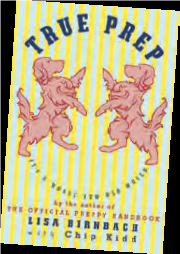 Buy it in hardcover at your local brick-and-mortar bookseller, or go for the preppier Kindle or iPad editions.
Buy it in hardcover at your local brick-and-mortar bookseller, or go for the preppier Kindle or iPad editions.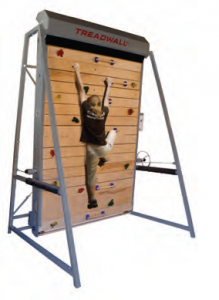 exercise equipment often migrates onto our holiday wish lists. If you think walking (or even running) is for wimps—and can put off that new car purchase for another year—then you might want to trade in your treadmill for a Treadwall, a motorless rotating climbing wall that moves by body weight alone. The good news is you are never more than 1-2 feet off the floor. The bad news is that this will set you back about $10,000 (a KidWall version is less). Check it out at uniquefit1.com or call around to some climber-friendly gyms. If work intrudes on your workout, then consider equipping your home office with a Gaiam BalanceBall Chair (on Amazon.com for about $80).
exercise equipment often migrates onto our holiday wish lists. If you think walking (or even running) is for wimps—and can put off that new car purchase for another year—then you might want to trade in your treadmill for a Treadwall, a motorless rotating climbing wall that moves by body weight alone. The good news is you are never more than 1-2 feet off the floor. The bad news is that this will set you back about $10,000 (a KidWall version is less). Check it out at uniquefit1.com or call around to some climber-friendly gyms. If work intrudes on your workout, then consider equipping your home office with a Gaiam BalanceBall Chair (on Amazon.com for about $80).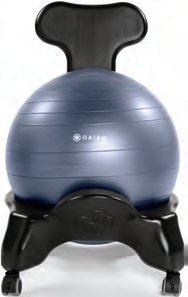 Chiropractically engineered, the chair continues working those core muscles even if you sit at your desk for hours. You’re basically buying the chair’s framework; the rest is BYOB (Bring Your Own Ball). It’s the same balance ball you use in your workout routines. Need to exercise on the road? You’ll have no more excuses away from home thanks to the Tumi Travel Fitness Trainer. It’s equipped with a pedometer, heart rate monitor, stopwatch, MP3 player and FM radio. Look for it at the Tumi store in the Short Hills Mall (or online at tumi.com) for about $165. Masochism comes in myriad forms, not all of which involve calorie burning workouts. Golf leaps to mind. Feeling the
Chiropractically engineered, the chair continues working those core muscles even if you sit at your desk for hours. You’re basically buying the chair’s framework; the rest is BYOB (Bring Your Own Ball). It’s the same balance ball you use in your workout routines. Need to exercise on the road? You’ll have no more excuses away from home thanks to the Tumi Travel Fitness Trainer. It’s equipped with a pedometer, heart rate monitor, stopwatch, MP3 player and FM radio. Look for it at the Tumi store in the Short Hills Mall (or online at tumi.com) for about $165. Masochism comes in myriad forms, not all of which involve calorie burning workouts. Golf leaps to mind. Feeling the  burn in this sport mostly happens between the ears. If greens are what get you blue, then consider the Laser Alignment Putting Trainer, which uses a laser beam to tell you when your putt is perfect— before you even touch the ball. Look for it online at hammacher.com for $329.95.
burn in this sport mostly happens between the ears. If greens are what get you blue, then consider the Laser Alignment Putting Trainer, which uses a laser beam to tell you when your putt is perfect— before you even touch the ball. Look for it online at hammacher.com for $329.95. you’ll be happy to hear that the toys of tomorrow are here today. For instance, you can actually carry around a computer in a pen with the LiveScribe Echo Smartpen. It captures everything you hear, write or say and delivers it with just a tap of the pen ($170 for 4GB and $200 for
you’ll be happy to hear that the toys of tomorrow are here today. For instance, you can actually carry around a computer in a pen with the LiveScribe Echo Smartpen. It captures everything you hear, write or say and delivers it with just a tap of the pen ($170 for 4GB and $200 for  8 GB versions at livescribe.com; also at Target). Or treat yourself to a Gyration Air Mouse, which controls apps on your computer, TV or DVD player with a wave of your hand ($70 and up at amazon.com or compusa.com). Gadget gals are turning cartwheels over the latest Flip Video Cams.
8 GB versions at livescribe.com; also at Target). Or treat yourself to a Gyration Air Mouse, which controls apps on your computer, TV or DVD player with a wave of your hand ($70 and up at amazon.com or compusa.com). Gadget gals are turning cartwheels over the latest Flip Video Cams.
 Their fetching case artwork belies their impressive HD video capabilities, with up to two hours of record time ($150 to $230). Best to go direct to theflip.com, where you can even upload your own photo for a personalized one-of-a-kind camera. If your final wish for 2010 (or final wish, period) is to careen down a snow-covered slope at 70 mph, then you’ll want to invest in an Airboard. Think of these Swiss-engineered inflatables as really Felixible Flyers. Popular for years in Europe, the Airboard has just begun appearing on American mountainsides. You may want to rent before you buy (they sell for $200 to $630 at airboard.com), and probably review your insurance policy. If your thrill-seeking tends to be a bit less public, then the Spy Net Secret Mission Video Watch may be more your speed. It’s a 21st Century take on those old decoder rings buried at the bottom of cereal boxes. It can audio record for 3 hours, video record for 20 minutes, and take still photos with a snake cam that lets you see around corners ($50 at jakks.com and also carried by Kmart).
Their fetching case artwork belies their impressive HD video capabilities, with up to two hours of record time ($150 to $230). Best to go direct to theflip.com, where you can even upload your own photo for a personalized one-of-a-kind camera. If your final wish for 2010 (or final wish, period) is to careen down a snow-covered slope at 70 mph, then you’ll want to invest in an Airboard. Think of these Swiss-engineered inflatables as really Felixible Flyers. Popular for years in Europe, the Airboard has just begun appearing on American mountainsides. You may want to rent before you buy (they sell for $200 to $630 at airboard.com), and probably review your insurance policy. If your thrill-seeking tends to be a bit less public, then the Spy Net Secret Mission Video Watch may be more your speed. It’s a 21st Century take on those old decoder rings buried at the bottom of cereal boxes. It can audio record for 3 hours, video record for 20 minutes, and take still photos with a snake cam that lets you see around corners ($50 at jakks.com and also carried by Kmart).

 Most experts agree that there are four cornerstones to a successful marriage. 1. Trust. 2. Honesty. 3. Unexpressed anger. 4. No sports junk on the walls. Many a man has tested rule #4 only to see that framed jersey or signed photo, without warning, donated to a local charity auction. Like a game of Jumanji, the priceless
Most experts agree that there are four cornerstones to a successful marriage. 1. Trust. 2. Honesty. 3. Unexpressed anger. 4. No sports junk on the walls. Many a man has tested rule #4 only to see that framed jersey or signed photo, without warning, donated to a local charity auction. Like a game of Jumanji, the priceless  heirloom insidiously then works its way into another home, where it initiates marital chaos all over again. Bill Crouse is the exception that proves rule #4. One of the world’s leading authorities on Art Deco posters, his collection may be the best ever assembled. When Crouse purchases a sports poster, it’s invariably a jaw-dropper. In these pages we present a handful of sporting selections from the renowned Crouse Collection. You won’t find these masterpieces at your suburban gala or fundraiser. You will see them in museums and galleries in Europe and the U.S. (including right now at the Guggenheim’s Chaos and Classicism exhibit). If you want to buy them at auction, be prepared to spend somewhere in the mid-six figures!
heirloom insidiously then works its way into another home, where it initiates marital chaos all over again. Bill Crouse is the exception that proves rule #4. One of the world’s leading authorities on Art Deco posters, his collection may be the best ever assembled. When Crouse purchases a sports poster, it’s invariably a jaw-dropper. In these pages we present a handful of sporting selections from the renowned Crouse Collection. You won’t find these masterpieces at your suburban gala or fundraiser. You will see them in museums and galleries in Europe and the U.S. (including right now at the Guggenheim’s Chaos and Classicism exhibit). If you want to buy them at auction, be prepared to spend somewhere in the mid-six figures! Art Deco posterists. In this advertisement for a 1934 tournament, Caroselli used this technique—along with an airbrushed black “cocoon”—to capture the energy of a layup.
Art Deco posterists. In this advertisement for a 1934 tournament, Caroselli used this technique—along with an airbrushed black “cocoon”—to capture the energy of a layup.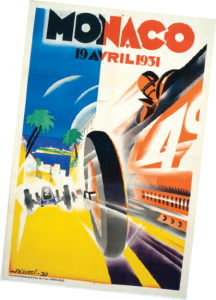 Monaco/19 Avril 1931 • Robert Falcucci (1900-1989) This rarest of Monaco GP posters—possibly the only example in private hands—shows a Mercedes SSK in hot pursuit of a red Bugatti. Falcucci’s use of white streaks running the length of the racer, concentric arcs of white behind to convey the rush of the wind, and the bright palette of red, yellow and blue give this streamlined design great panache. A multitalented painter, decorator and illustrator, Falcucci received his formal training in Paris and served as the historical painter for the French Army.
Monaco/19 Avril 1931 • Robert Falcucci (1900-1989) This rarest of Monaco GP posters—possibly the only example in private hands—shows a Mercedes SSK in hot pursuit of a red Bugatti. Falcucci’s use of white streaks running the length of the racer, concentric arcs of white behind to convey the rush of the wind, and the bright palette of red, yellow and blue give this streamlined design great panache. A multitalented painter, decorator and illustrator, Falcucci received his formal training in Paris and served as the historical painter for the French Army.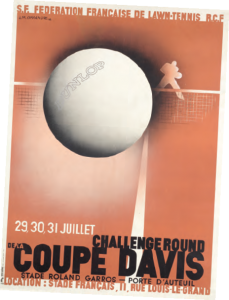
 attention by placing them in the path of an oncoming shot at net. The use of geometry and dynamic perspective in this extraordinarily rare poster— as well as the ease with which the design’s elements are assembled—are superb examples of what made Cassandre the most important Art Deco figure in the history of advertising posters.
attention by placing them in the path of an oncoming shot at net. The use of geometry and dynamic perspective in this extraordinarily rare poster— as well as the ease with which the design’s elements are assembled—are superb examples of what made Cassandre the most important Art Deco figure in the history of advertising posters. III Olympic Winter Games • Witold Gordon (1885-1968) Gordon left no doubt in this iconic poster where the center of the
III Olympic Winter Games • Witold Gordon (1885-1968) Gordon left no doubt in this iconic poster where the center of the 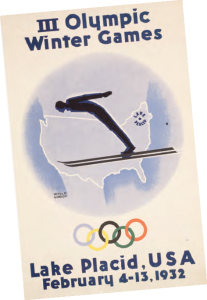 sports universe would be in February of 1932: Lake Placid. These Winter Games—the first held in North America—were opened by New York Governor (and soon-to-be U.S. President) Franklin Roosevelt. Gordon also designed the grand murals at Radio City Music Hall and the 1939 World’s Fair.”
sports universe would be in February of 1932: Lake Placid. These Winter Games—the first held in North America—were opened by New York Governor (and soon-to-be U.S. President) Franklin Roosevelt. Gordon also designed the grand murals at Radio City Music Hall and the 1939 World’s Fair.” 1er Campeonato Mondial de Football • Guillermo Laborde (1886-1940) This poster for the inaugural World Cup is the Holy Grail collectible for soccer fans. Laborde conveys the action and athleticism of the sport with
1er Campeonato Mondial de Football • Guillermo Laborde (1886-1940) This poster for the inaugural World Cup is the Holy Grail collectible for soccer fans. Laborde conveys the action and athleticism of the sport with  just a few linear elements. An acclaimed South American artist and sculptor, he agreed to judge the poster submissions for the 1930 World Cup. Later, Laborde resigned from the panel and submitted two of his own—which came in first and third.
just a few linear elements. An acclaimed South American artist and sculptor, he agreed to judge the poster submissions for the 1930 World Cup. Later, Laborde resigned from the panel and submitted two of his own—which came in first and third.
 That’s fine if your goal is to own an undistinguished sofa-sized oil. But what if you want fine art—the kind that will brighten your life and fatten your bottom line? The answer may be as close as your local gallery. For those who believe you have to cross the Hudson to find investment-grade art, this idea may go against the grain. But the fact is that building a relationship with a gallery (or galleries) here in the Garden State can yield a far greater return—not just in terms of value and quality, but in so many other ways. This applies to the seasoned collector as well as the novice. In fact, if you’re like so many New Jerseyans, the thought of opening your checkbook in a local art gallery is nothing short of terrifying. First things first. Let’s wrap our minds around the reasons New Jerseyans don’t buy art. Above all there is the intimidation factor. Most people are afraid they’ll be taken to the cleaners by an unscrupulous gallery owner.
That’s fine if your goal is to own an undistinguished sofa-sized oil. But what if you want fine art—the kind that will brighten your life and fatten your bottom line? The answer may be as close as your local gallery. For those who believe you have to cross the Hudson to find investment-grade art, this idea may go against the grain. But the fact is that building a relationship with a gallery (or galleries) here in the Garden State can yield a far greater return—not just in terms of value and quality, but in so many other ways. This applies to the seasoned collector as well as the novice. In fact, if you’re like so many New Jerseyans, the thought of opening your checkbook in a local art gallery is nothing short of terrifying. First things first. Let’s wrap our minds around the reasons New Jerseyans don’t buy art. Above all there is the intimidation factor. Most people are afraid they’ll be taken to the cleaners by an unscrupulous gallery owner. Second, they are nervous that their friends will make fun of a purchase that is different and modern, or simply out of character. Feeding this double-barreled paranoia is the fact that—particularly in the case of an abstract piece—one cannot specifically define the level of talent and technical skill involved in producing modern art. And on top of these very legitimate fears is the great, big elephant in the room: Why, when New York City is so close, would anyone buy art in New Jersey in the first place? Permit me to deal with this last objection first. Galleries here in New Jersey are indeed different than most galleries in the city. That is to say that they are friendly and approachable. If you think about it, it makes complete sense. Gallery owners are where they are, and do what they do, because they love and appreciate art. If they were in this business to make a killing, I hate to say it but they would be in Manhattan. What else does New Jersey have to offer art buyers that the city doesn’t? Well, there is a lot of first-rate talent that, for one reason or another, is only shown on this side of the Hudson.
Second, they are nervous that their friends will make fun of a purchase that is different and modern, or simply out of character. Feeding this double-barreled paranoia is the fact that—particularly in the case of an abstract piece—one cannot specifically define the level of talent and technical skill involved in producing modern art. And on top of these very legitimate fears is the great, big elephant in the room: Why, when New York City is so close, would anyone buy art in New Jersey in the first place? Permit me to deal with this last objection first. Galleries here in New Jersey are indeed different than most galleries in the city. That is to say that they are friendly and approachable. If you think about it, it makes complete sense. Gallery owners are where they are, and do what they do, because they love and appreciate art. If they were in this business to make a killing, I hate to say it but they would be in Manhattan. What else does New Jersey have to offer art buyers that the city doesn’t? Well, there is a lot of first-rate talent that, for one reason or another, is only shown on this side of the Hudson.  There is no comparison in terms of service. Try walking into a gallery on West Broadway or Madison Avenue and asking the owner to drive out to your place in Westfield for a consultation. That thud is the sound of his jaw hitting the floor. A gallery owner in or around your town, on the other hand, will likely welcome this opportunity. New Jersey art dealers are genuinely interested in the people who live around them, and cultivating relationships that extend beyond the buying and selling of art. They are part of the fabric of the community. Connecting with a local gallery also happens to be a superb way of adding texture to your social life. Once you’re “on the list” you’ll be invited to opening receptions whenever a new artist is featured. How often do you get to mix and mingle with new people who just happen to share a common interest? The majority of people attending gallery openings are like you—they want to know more about art and the people who buy it. (By the way, a free wine-and-cheese gathering is a wonderful springboard to dinner, a movie, or whatever else you’ve planned for an evening out.) Okay, so what about the financial side of the gallery relationship? Now more than ever, as we balance the merits of saving and spending, it is important to know what you get for your money when you purchase a work of art. Whether the price tag is several hundred or several thousand, dealers who live and work nearby are unlikely to “rip off” customers; they have reputations to uphold. If you happen to be one of the fortunate few who have five or six figures to invest in art, a good dealer will have solid connections to galleries that can point you in the right direction (and more importantly, steer you clear of the wrong direction). Either way, if your appreciation of art is tied to its potential appreciation, make that clear to the gallery owners you deal with.
There is no comparison in terms of service. Try walking into a gallery on West Broadway or Madison Avenue and asking the owner to drive out to your place in Westfield for a consultation. That thud is the sound of his jaw hitting the floor. A gallery owner in or around your town, on the other hand, will likely welcome this opportunity. New Jersey art dealers are genuinely interested in the people who live around them, and cultivating relationships that extend beyond the buying and selling of art. They are part of the fabric of the community. Connecting with a local gallery also happens to be a superb way of adding texture to your social life. Once you’re “on the list” you’ll be invited to opening receptions whenever a new artist is featured. How often do you get to mix and mingle with new people who just happen to share a common interest? The majority of people attending gallery openings are like you—they want to know more about art and the people who buy it. (By the way, a free wine-and-cheese gathering is a wonderful springboard to dinner, a movie, or whatever else you’ve planned for an evening out.) Okay, so what about the financial side of the gallery relationship? Now more than ever, as we balance the merits of saving and spending, it is important to know what you get for your money when you purchase a work of art. Whether the price tag is several hundred or several thousand, dealers who live and work nearby are unlikely to “rip off” customers; they have reputations to uphold. If you happen to be one of the fortunate few who have five or six figures to invest in art, a good dealer will have solid connections to galleries that can point you in the right direction (and more importantly, steer you clear of the wrong direction). Either way, if your appreciation of art is tied to its potential appreciation, make that clear to the gallery owners you deal with. They will help you assess potential purchases (or emerging artists) with that goal in mind. Another advantage to buying in New Jersey—besides the good feeling that comes with supporting a local business— is that gallery owners here may be much more likely to work a deal that fits your finances. Their overhead is lower than in the city, which may translate into wiggle room when you whip out the checkbook. Finally, keep in mind as you shop or budget for fine art that you are buying something that could turn out to be a family treasure. Art is timeless. Art is priceless. Unlike a sofa or granite countertop, it does not depreciate the moment it walks through your front door. If you’ve chosen wisely, in fact, it could appreciate dramatically. And as it moves from your home to your children’s, and then to your children’s children’s and beyond, it serves as a link between the generations. In the meantime, this investment will enhance your quality of life every time you fix your gaze upon it. Indeed, as Pablo Picasso once observed, art “washes away from the soul the dust of everyday life.” Amen to that. Some other art icons have also had a thing or two to say on the subject. Jackson Pollock famously noted that every good painter paints what he is. Rembrandt suggested practicing what you know to make clear what now you do not know. Believe it or not, Michelangelo often insisted, I can actually draw. Clarity and simplicity enabled these great painters to create magnificently complex works of art. When it comes to buying art in the Garden State, a little clarity and simplicity also goes a long way. EDGE
They will help you assess potential purchases (or emerging artists) with that goal in mind. Another advantage to buying in New Jersey—besides the good feeling that comes with supporting a local business— is that gallery owners here may be much more likely to work a deal that fits your finances. Their overhead is lower than in the city, which may translate into wiggle room when you whip out the checkbook. Finally, keep in mind as you shop or budget for fine art that you are buying something that could turn out to be a family treasure. Art is timeless. Art is priceless. Unlike a sofa or granite countertop, it does not depreciate the moment it walks through your front door. If you’ve chosen wisely, in fact, it could appreciate dramatically. And as it moves from your home to your children’s, and then to your children’s children’s and beyond, it serves as a link between the generations. In the meantime, this investment will enhance your quality of life every time you fix your gaze upon it. Indeed, as Pablo Picasso once observed, art “washes away from the soul the dust of everyday life.” Amen to that. Some other art icons have also had a thing or two to say on the subject. Jackson Pollock famously noted that every good painter paints what he is. Rembrandt suggested practicing what you know to make clear what now you do not know. Believe it or not, Michelangelo often insisted, I can actually draw. Clarity and simplicity enabled these great painters to create magnificently complex works of art. When it comes to buying art in the Garden State, a little clarity and simplicity also goes a long way. EDGE 




 Is it too much to ask that people not buy their first saltwater aquarium along with the fishes, live rock, and invertebrates all on their first visit to a pet shop? I experiment constantly, and found the very best aquarium I ever kept was limited to live rocks for a whole year before I put any fish in. I always tell my friends to “grow something” in the water first. No matter how many products are available to help start aquariums quickly, the aquarist’s best friend starting out is time. • Patronize the local brick & mortar pet shop and—I’ll say it again—beware of bargains. Even though it may not be able to compete with Internet prices, your local pet shop was likely opened as a labor of love and expertise; these folks are looking to make a living, not a fortune. Pet shop insiders will be the most generous of people with their time, experience, and good advice. However, be aware of the fishmonger who repeats whatever it is you just said, who agrees with a wayward premise. (Yeah! I always feed live guppies to all my cichlids.) If the advice smells like a bucket of week-old dead fish, this is what you’ll probably have next week if you buy from this guy. I only thank my lucky stars that Clownfish are now being commercially farmed at facilities like the ORA hatchery complex in Ft. Pierce, Florida and need not be collected from the wild. Had Nemo been an equally adorable Banggai Cardinalfish, collection pressures on the small wild populations would definitely have put this species at serious risk, even though it too is able to be bred in captivity; just not enough to supply the demand for fish that a movie like Nemo would generate. Although some of us in the industry wrestle with our consciences, in the end we believe that every person who begins a saltwater aquarium—regardless of the outcome— gains new respect and appreciation for our delicate planet. I can’t think of any other exercise that shows us in such acute detail just how difficult it can be to keep a small being living under our care. Perhaps if more people dedicated themselves to maintaining flourishing saltwater tanks, the Gulf of Mexico would still support a shrimping industry, global warming would be addressed in a more proactive way, and we would realize that the line between the coral reefs of Fiji and the Arthur Kill can be an astoundingly fine one. EDGE
Is it too much to ask that people not buy their first saltwater aquarium along with the fishes, live rock, and invertebrates all on their first visit to a pet shop? I experiment constantly, and found the very best aquarium I ever kept was limited to live rocks for a whole year before I put any fish in. I always tell my friends to “grow something” in the water first. No matter how many products are available to help start aquariums quickly, the aquarist’s best friend starting out is time. • Patronize the local brick & mortar pet shop and—I’ll say it again—beware of bargains. Even though it may not be able to compete with Internet prices, your local pet shop was likely opened as a labor of love and expertise; these folks are looking to make a living, not a fortune. Pet shop insiders will be the most generous of people with their time, experience, and good advice. However, be aware of the fishmonger who repeats whatever it is you just said, who agrees with a wayward premise. (Yeah! I always feed live guppies to all my cichlids.) If the advice smells like a bucket of week-old dead fish, this is what you’ll probably have next week if you buy from this guy. I only thank my lucky stars that Clownfish are now being commercially farmed at facilities like the ORA hatchery complex in Ft. Pierce, Florida and need not be collected from the wild. Had Nemo been an equally adorable Banggai Cardinalfish, collection pressures on the small wild populations would definitely have put this species at serious risk, even though it too is able to be bred in captivity; just not enough to supply the demand for fish that a movie like Nemo would generate. Although some of us in the industry wrestle with our consciences, in the end we believe that every person who begins a saltwater aquarium—regardless of the outcome— gains new respect and appreciation for our delicate planet. I can’t think of any other exercise that shows us in such acute detail just how difficult it can be to keep a small being living under our care. Perhaps if more people dedicated themselves to maintaining flourishing saltwater tanks, the Gulf of Mexico would still support a shrimping industry, global warming would be addressed in a more proactive way, and we would realize that the line between the coral reefs of Fiji and the Arthur Kill can be an astoundingly fine one. EDGE 
